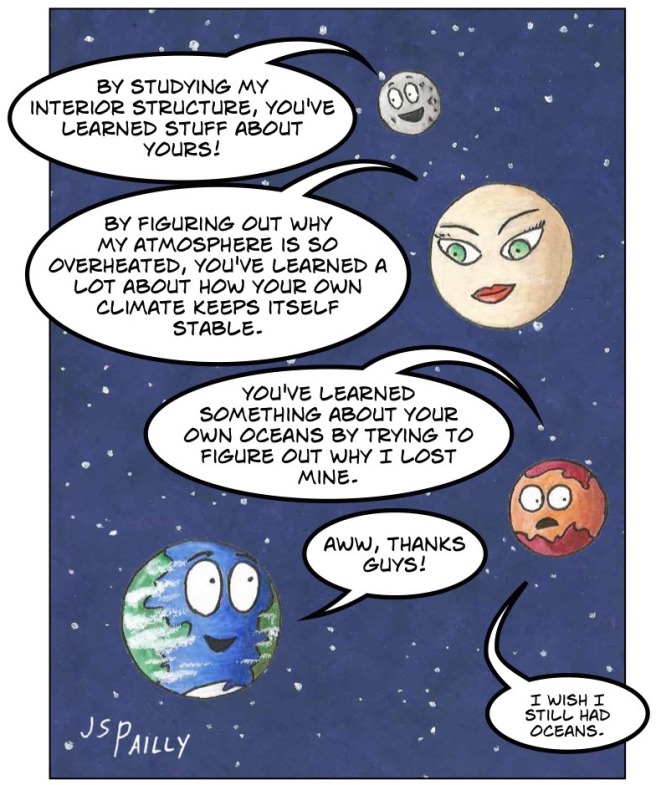Why is Earth so special? Why did life develop and thrive here and (as far as we know) nowhere else in the Solar System? These are questions scientists and science fiction writers alike must puzzle over. Part of the answer may involve Earth’s ginormous moon.
Please note: for the sake of clarity, I’ll refer to Earth’s moon as Luna in today’s post even though that is not the Moon’s official I.A.U. name.
Although Luna is not the largest moon in the Solar System (that honor goes to Ganymede), the mass ratio between Earth and Luna is way, way out of whack compared to other planet/moon combinations. A moon as large as Luna has no business orbiting a planet as small as Earth.
So what’s the effect of Luna’s relatively large size?
Scientists have speculated that Luna’s gravity does more than create tides. It may also help stabilize Earth’s orbital axis.
According to at least some computer simulations, Earth could easily tilt sideways by as much as 85 degrees if not for Luna’s constant gravitational tug. This would lead to sudden and dramatic changes to the global climate. Changes that life might not be able to cope with.
If that’s true, then disproportionately large moons like Luna may be necessary for all life-bearing planets. Since Luna-like moons are surely rare, this drastically limits the chances of finding life elsewhere in the universe. Which totally sucks (not a scientific evaluation, just my opinion).
However, there may be other possibilities. For example, some simulations indicate that a moonless Earth could still keep itself balanced thanks to the gravitational influence of Jupiter.
The lesson for science fiction writers is that life-bearing planets probably need something to hold them steady. Whether that something is a Luna-like moon, a Jupiter-like planet, or some other large nearby object is up to the writer’s imagination. At least until science provides us with more conclusive data.
Links
Earth’s Stabilizing Moon May Be Unique Within Universe from Space.com.
The Odds for Life on a Moonless Earth from Astrobiology Magazine.
* * *
Today’s post is part of Moon month for the 2015 Mission to the Solar System. Click here for more about this series.








